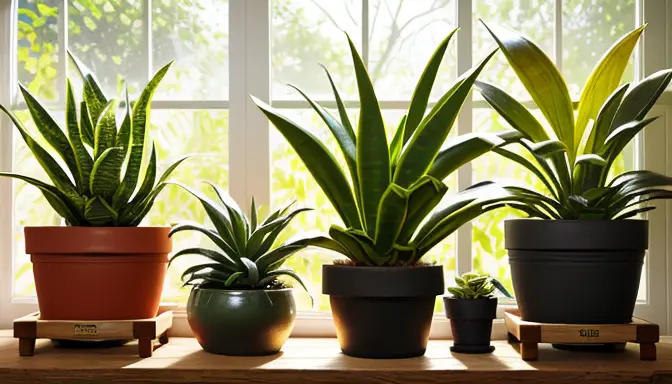Snake plants are known for their resilience and easy maintenance, but sometimes they can start to bend, losing their upright posture. However, fear not! There are 10 creative ways to save your snake plant from bending and restore it to its former glory.
- Proper Lighting: Ensure your snake plant gets enough sunlight or artificial light to prevent bending.
- Correct Watering Techniques: Master the art of watering to avoid over or under-watering, which can lead to bending.
- Use a Well-Draining Pot: Choose a pot with adequate drainage to prevent waterlogging and bending.
- Water at the Base: Directly water the soil at the base to prevent water accumulation on leaves.
- Proper Support System: Implement stakes or trellises for vertical growth support.
- Regular Pruning: Trim damaged leaves for new growth and posture maintenance.
- Remove Dust and Debris: Clean leaves regularly for proper photosynthesis.
- Optimal Temperature and Humidity: Maintain ideal levels for a healthy plant.
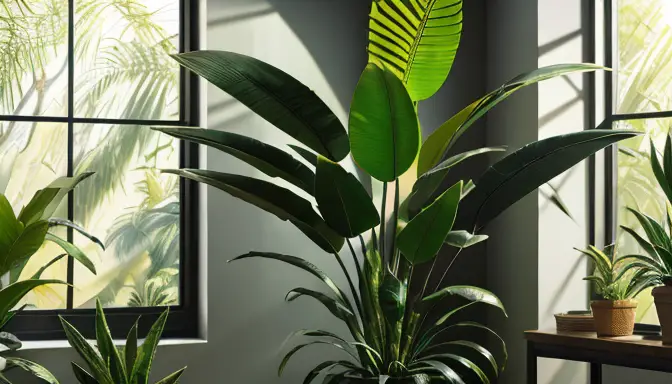

Proper Lighting
Proper lighting is crucial for the health and upright growth of your snake plant. Without adequate sunlight or artificial light, your plant may start to bend and lean towards the nearest light source, compromising its posture and overall appearance.
To ensure your snake plant thrives, place it in a location where it can receive indirect sunlight or bright, filtered light. Direct sunlight can scorch the leaves, while too little light can lead to stretching and bending. Consider rotating your plant occasionally to promote even growth on all sides.
Additionally, if you’re using artificial light, opt for full-spectrum grow lights to mimic natural sunlight. Position the lights about 6 to 12 inches above the plant and adjust the duration based on the plant’s specific light requirements.
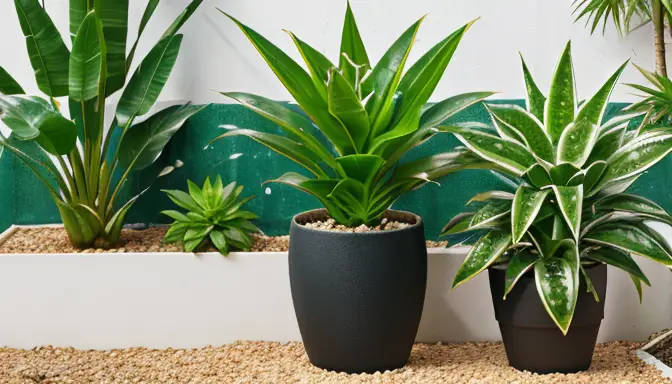
Correct Watering Techniques
When it comes to keeping your snake plant healthy and upright, mastering the correct watering techniques is essential. Overwatering or underwatering can both lead to bending and other issues, so finding the right balance is key. Here are some tips to ensure you are watering your snake plant correctly:
- Water Sparingly: Snake plants are known for their ability to store water in their leaves, so they don’t need frequent watering. Allow the soil to dry out between waterings to prevent root rot and bending.
- Use Room Temperature Water: Avoid using cold water directly from the tap, as it can shock the plant. Opt for room temperature water to keep your snake plant happy.
- Check Soil Moisture: Before watering, check the moisture level of the soil by inserting your finger about an inch deep. Only water if the soil feels dry to the touch.
- Drain Excess Water: Make sure your pot has drainage holes to allow excess water to escape. Standing water can lead to root rot and ultimately cause your snake plant to bend.
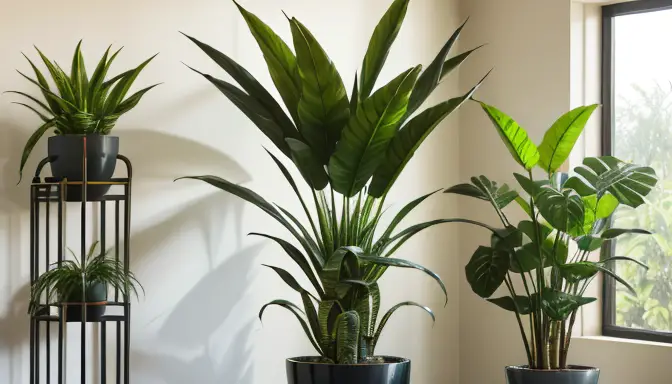
Use a Well-Draining Pot
When it comes to ensuring the health and upright growth of your snake plant, choosing the right pot is crucial. Using a well-draining pot is essential in preventing waterlogging, which can lead to bending and other issues. A pot with proper drainage holes allows excess water to escape, keeping the soil moisture level in check and avoiding water accumulation at the roots.
Here are some key points to consider when selecting a well-draining pot for your snake plant:
- Choose a pot with drainage holes at the bottom to allow water to flow out easily.
- Opt for a pot made of porous materials like terracotta or ceramic, which can help excess moisture evaporate.
- Avoid using pots without drainage holes, as they can trap water and cause root rot.
By providing your snake plant with a well-draining pot, you can create a healthy environment that promotes proper growth and minimizes the risk of bending due to water-related issues.
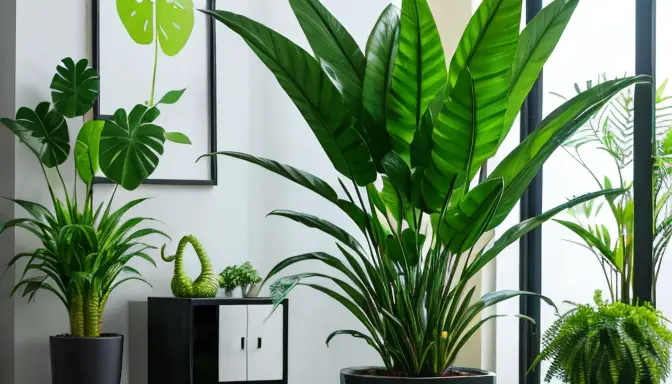
Water at the Base
When it comes to watering your snake plant, the method you use can make a significant difference in preventing bending. Watering at the base is a crucial technique to ensure the plant’s health and posture. By directly watering the soil at the base of the plant, you can avoid water accumulation on the leaves, which can lead to bending issues. This method allows the roots to absorb water efficiently without causing stress to the plant. To make sure you are watering at the base effectively, consider the following tips:
- Use a watering can with a narrow spout to target the soil directly.
- Avoid splashing water on the leaves to prevent moisture-related problems.
- Water the plant slowly to allow the soil to absorb the water evenly.
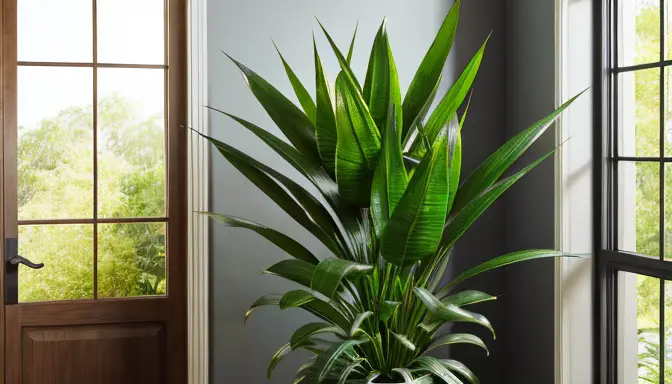
Proper Support System
When it comes to maintaining the upright growth of your snake plant and preventing bending, implementing a proper support system is essential. By providing the necessary support, you can help your plant grow vertically and maintain its posture effectively. Here are some innovative ways to establish a reliable support system for your snake plant:
- Utilize stakes or bamboo poles to gently guide the plant’s growth direction without causing damage.
- Consider using decorative trellises or plant cages that not only offer support but also add aesthetic appeal to your indoor space.
- For larger snake plants, create a DIY support structure using wooden frames or wire mesh to prevent bending under the weight of the foliage.
Remember, a strong support system not only helps your snake plant stay upright but also promotes healthy growth and overall well-being. By incorporating these techniques, you can ensure that your snake plant thrives without any bending issues.
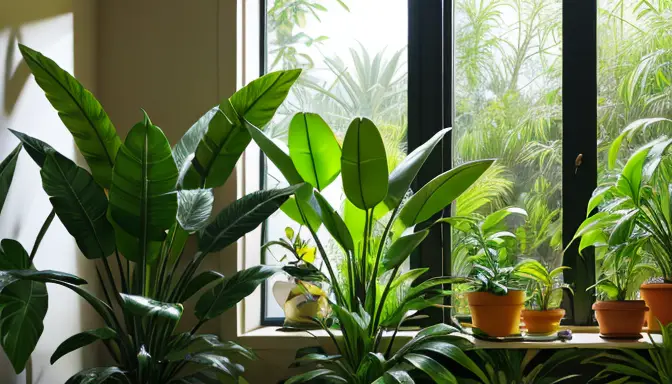
Regular Pruning
Regular pruning is essential for maintaining the health and appearance of your snake plant. By removing damaged or weak leaves, you can stimulate new growth and ensure that your plant maintains its shape and posture. Additionally, pruning helps prevent overcrowding, allowing the plant to allocate resources more efficiently. Here are some key tips to follow when pruning your snake plant:
- Use sharp, clean scissors or pruning shears to avoid damaging the plant.
- Trim any yellowing or browning leaves to promote healthy growth.
- Focus on cutting at an angle to mimic the natural shape of the leaves.
- Regularly inspect your plant for any signs of pests or diseases while pruning.
Remember, regular pruning not only keeps your snake plant looking its best but also encourages overall vitality and growth. It’s a simple yet effective way to ensure your plant remains strong and resilient against bending or drooping.
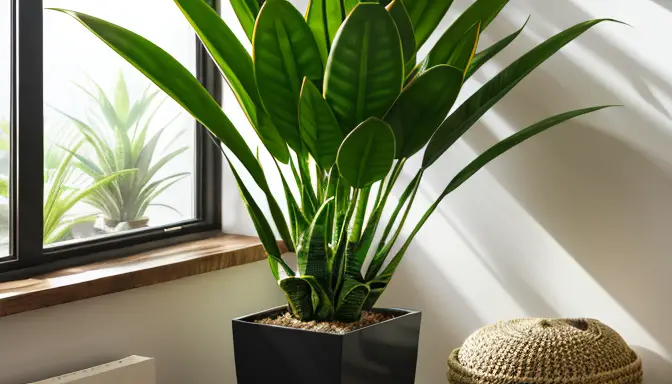
Remove Dust and Debris
When it comes to caring for your snake plant, one crucial aspect that is often overlooked is the need to from its leaves. Dust and debris can accumulate over time, blocking the plant’s pores and hindering its ability to perform photosynthesis effectively. This can lead to issues such as bending and overall poor health for your snake plant. To ensure your plant thrives, it’s essential to regularly clean its leaves and rid them of any build-up. Here are some effective ways to keep your snake plant free from dust and debris:
- Gently wipe the leaves with a damp cloth or sponge to remove any dust particles.
- Use a soft brush to dust off the leaves, being careful not to damage them.
- If the dust is stubborn, you can rinse the leaves under a gentle stream of water to clean them thoroughly.
- Consider using a mild soap solution to clean the leaves, especially if there are sticky residues present.
By incorporating regular cleaning into your snake plant care routine, you can ensure that your plant stays healthy, vibrant, and free from bending caused by dust and debris accumulation.
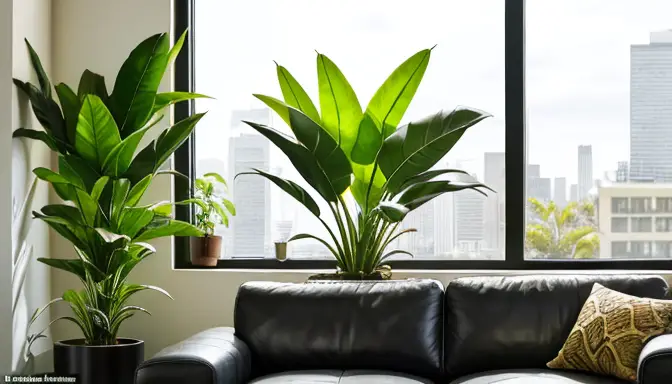
Optimal Temperature and Humidity
When it comes to maintaining the health and posture of your snake plant, optimal temperature and humidity play a crucial role. Just like humans, snake plants thrive in certain environmental conditions that are not too hot, not too cold, but just right. So, how can you ensure your snake plant is living its best life in terms of temperature and humidity?
First and foremost, it’s essential to understand that snake plants prefer temperatures between 60-85°F (15-29°C). This range mimics their natural habitat and promotes healthy growth. Avoid exposing your snake plant to extreme temperature fluctuations, as this can stress the plant and lead to bending issues.
Additionally, maintaining the right humidity level is key. Snake plants enjoy moderate to high humidity, ideally between 40-70%. To create an optimal environment, you can place a humidifier near your plant or use a pebble tray filled with water to increase humidity levels.
If you live in a dry climate, misting your snake plant occasionally can also help maintain adequate moisture levels. However, be cautious not to overdo it, as excessive moisture can invite pests and diseases.
By striking the perfect balance between temperature and humidity, you can ensure your snake plant remains healthy, upright, and free from bending woes. Remember, a happy plant leads to a happy plant parent!
Frequently Asked Questions
- How often should I water my snake plant?
Snake plants should be watered sparingly, allowing the soil to dry out between waterings. Overwatering can lead to root rot and bending of the plant.
- Can I place my snake plant in direct sunlight?
While snake plants can tolerate low light conditions, direct sunlight can scorch their leaves. It is best to place them in indirect sunlight or under artificial light.
- Do snake plants require regular pruning?
Regular pruning is beneficial for snake plants to remove dead or damaged leaves and encourage new growth. This helps maintain the plant’s shape and posture.
- How can I improve the humidity levels for my snake plant?
You can increase humidity levels for your snake plant by misting its leaves, placing a humidifier nearby, or grouping it with other plants to create a microclimate.
- Snake Plant Low Temperature Tolerance: What You Need to Know - May 5, 2024
- Snake Plant Leaf Splitting: Causes and Solutions - May 4, 2024
- Snake Plant Cold Hardiness: Tips for Winter Care - May 4, 2024
